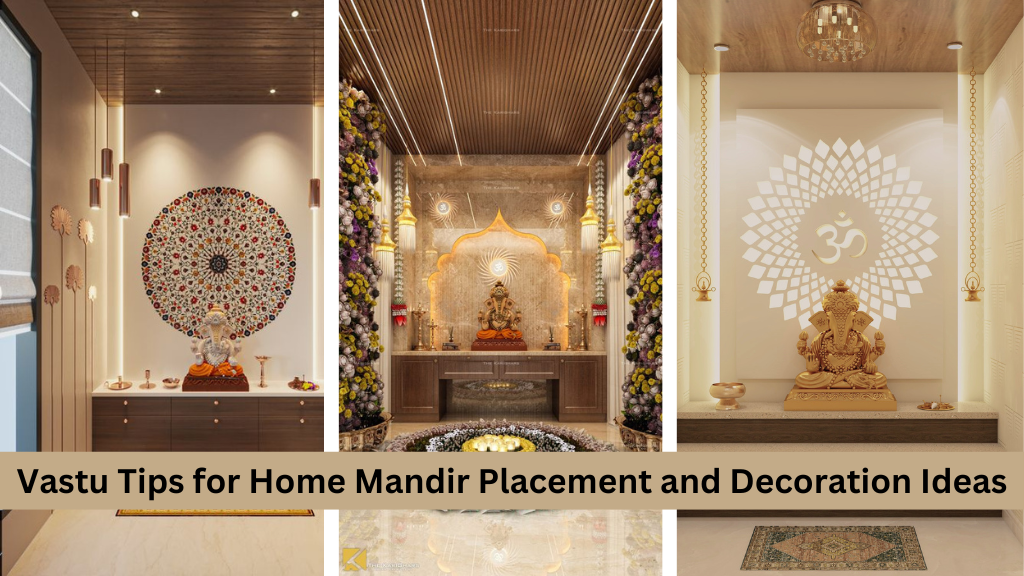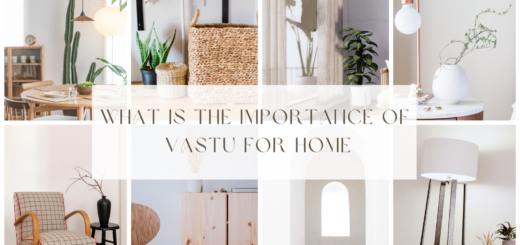Vastu Tips for Home Mandir Placement and Decoration Ideas
Vastu Tips: Aligning the Mandir orientation and the temple area in line with vastu shastra can bring health, wealth, and fulfillment to the house and its residents.

Vastu Tips for Home Mandir Placement and Decoration Ideas
Establishing a temple or pooja ghar in a Hindu home is a sacred and cherished tradition that holds immense significance. Following the principles of Vastu Shastra when constructing a house and arranging its rooms, including locating the temple in the ideal direction, plays a crucial role in fostering positivity and harmony within the household. When the mandir is positioned in alignment with Vastu Shastra, it not only enhances the spiritual atmosphere of the home but also bestows health, wealth, and happiness upon its inhabitants. This sacred space serves as a sanctuary where prayers are offered, and divine blessings are sought, creating a serene haven that radiates positive energy throughout the dwelling. Embracing these rituals and guidelines brings a sense of peace and prosperity, enriching the lives of those who dwell within.
Where to position Mandir In Home According To Vastu? – Vastu Tips for Home Mandir Placement and Decoration Ideas

In Vastu Shastra, the northeast direction, also known as ishan kona, is considered highly auspicious. It is believed to be the most favorable direction for placing a mandir or temple in a home. This area is associated with positive energy flow and spiritual vibrations, making it an ideal location for a sacred space within your living environment. By placing the mandir in the northeast direction, you invite blessings, peace, and harmony into your home, creating a serene atmosphere that promotes spiritual well-being and positivity for all who dwell there. Embracing this ancient wisdom can enhance the energy of your living space and bring a sense of tranquility and divine presence into your daily life.
Points to Consider When Placing an Idol in the Pooja Room – Vastu Tips for Home Mandir Placement and Decoration Ideas
- This practice is believed to enhance the flow of positive energy in the space and create a sense of reverence towards the divine. By placing deity idols on an elevated pedestal, it symbolizes respect and devotion, inviting harmony and tranquility into your surroundings. Embracing this aspect of Vastu can not only bring spiritual benefits but also contribute to a more balanced and peaceful atmosphere in your home or sacred space.
- Instead, it is recommended to place the garlands around the neck or arms of the idols to show respect and appreciation. By following this practice, the beauty and significance of the idols can be fully appreciated without obstructing their facial features. This gesture of reverence allows for a deeper connection with the divine essence that the idols represent, honoring their spiritual presence in a meaningful and respectful way.
- When setting up a temple at home, it is important to be mindful of the size of the deity idols that are placed within it. According to tradition, it is believed to be inauspicious to keep large deity idols in the temple at home. To ensure positive energy and blessings flow freely, the size of the idol should not exceed seven inches. By adhering to this practice, one can create a sacred space that invites peace, harmony, and spiritual connection into the home.
- Having solid idols in the pooja room is an important aspect of many spiritual practices. Solid idols are believed to hold more spiritual energy and are considered more auspicious for worship. It is said that these idols have the power to radiate positive vibrations and create a sacred atmosphere in the pooja room. By keeping solid idols, individuals can deepen their connection with the divine and experience a greater sense of peace and harmony in their homes. So, it is advisable to follow this tradition and choose solid idols for your pooja room to enhance your spiritual practice.
Best Placement for the Pooja Room According to Vastu – Vastu Tips for Home Mandir Placement and Decoration Ideas
When designing a prayer room in your home, opt for the northeast or east corner. You can create a compact shrine in the recommended Vastu location.
However, refrain from situating the mandir in these locations:
- Under a staircase
- In front of the main door
- Basement
- Near a toilet
Things to Add to Your Puja Room for Inviting Good Fortune.
- To create a sacred ambiance and cleanse the space, consider lighting scented candles, dhoop, or incense sticks.
- Placing a red cloth beneath any picture or idols in the temple is recommended.
- In the left corner of the puja room, it is advised to place a bell. According to mandir vastu, the sound of the bell helps repel negativity.
- Maintain a puja thali crafted from silver, brass, copper, meenakari embellishment, or even steel.
- Additionally, it is advisable to adorn the floor of the puja room with a rangoli, as it is believed to bring good luck and prosperity.
Best Colors for the Puja Room According to Vastu.
These soft and soothing colors create a peaceful ambiance in the puja room, enhancing the spiritual atmosphere. White symbolizes purity and peace, light blues evoke a sense of serenity, beige promotes calmness, orange represents energy and enthusiasm, lavender brings a sense of tranquility, cream signifies simplicity, and light yellow exudes positivity. By avoiding black and dark brown, you prevent any negative energy from entering the sacred space, ensuring that only positive vibrations flow through the divine environment. Embracing these color choices will further elevate the sanctity of your puja room, inviting a sense of harmony and reverence into your home.



